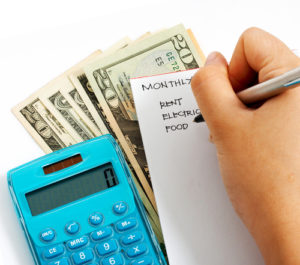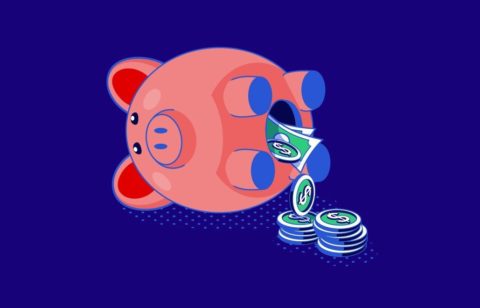Are your scrimping and struggling to make ends meet? Do feel as if you’re always running out of money before the end of the month? Do you have credit cards that you’ve maxed out? You’re not alone. The effects of the Great Recession coupled with stagnant wages have left many American families facing the need for debt relief.
It can feel even worse if you’re facing a mountain of debt. This can leave you practically tearing your hair out or feeling as if your world was as bleak as a rainy Monday morning. You may be getting repeated calls from angry creditors or even from debt collectors. In short, your life has become pretty miserable and what you want above all else is debt relief. You’ve seen that there are things called debt relief programs and you’re been wondering what they are and do they really work.
The types of debt relief programs
There are five types of debt relief programs. They are a debt consolidation loan, a balance transfer, a debt management plan, debt negotiation (also called debt settlement) and bankruptcy. It’s important to know how each of these programs work so that you can choose the one that best fits your circumstances.
A debt consolidation loan
One way to achieve debt relief is to get a debt consolidation loan and use the money to pay off your other debts. There are secured and unsecured debt consolidation loans. Personal loans are unsecured loans. If you have really good credit, it’s currently possible to get one with an interest rate as low as 5.85%. These loans have fixed payments and fixed terms of three or five years. In fact, this is one of their biggest pluses, which is that you’ll know exactly when you’ll have the loan paid off and have debt relief.
If your credit isn’t so red-hot but you own your home and have some equity you should be able to get either a homeowner equity line of credit or a home equity loan. The national average interest rate for a $30,000, fixed-interest home equity loan is currently 4.74%. The average interest rate for a $30,000 home equity line of credit is also 4.74%.
How can you know if a debt consolidation loan would help you achieve debt relief? You’ll first need to calculate the average interest rate you’re now paying. For example, if you have credit card debts at 15%, 19%, 17% and 18% your average interest rate is 17.25%. If you could get a personal loan at, say, 9% you would definitely have lower monthly payments. If you chose a home equity loan or home equity line of credit you would also have much lower monthly payments though it would take you more time (15 or 30 years) before you’d have total debt relief.
A balance transfer
If you have high-interest credit card debts you might be able to transfer their balances to a new one with a lower interest rate or, better yet, a 0% balance transfer card. Again, you would need to calculate the average interest rate on your credit card debts and then compare this with the interest rate on the new card. Of course, if you could qualify for a 0% balance transfer card you’ll have as many as 18 months’ interest free, which might be enough time for you to pay off the new balance. However, you’ll need to have pretty good credit to get one of the 0% transfer cards. And you would need to pay off your balance – or as much of your balance as possible – before your introductory period ends as your interest rate could then skyrocket to as high as 19%.
 A debt management plan
A debt management plan
A debt management plan is simply that – a plan for managing your debts. While you could create your own plan most people that are deeply in debt choose to go to a consumer credit counseling agency for a debt management plan (DMP). The way this works is that you’ll
be assigned a counselor who will develop the plan and present it to your creditors. She or he will negotiate with them to get your interest rates reduced and any fees waived
Assuming your creditors sign off on your plan you’ll stop paying them. You will make a fixed payment each month to the credit counseling agency instead. This means your debts will be consolidated. On the downside, you’ll likely see all of your accounts closed. Your creditors may allow you to keep one credit card to use in case of an emergency but you’ll lose the rest. Your monthly payment should be a lot lower than the sum of the payments you’ve been making. It typically takes from four to five to years to complete a debt management plan but at the end you should have total debt relief.
Debt negotiation
While it’s possible to negotiate several things with lenders the most popular one is debt settlement. The way this works is that you contact each of your lenders and offer a lump sum payment to settle the debt but for less than you owe. This has become very popular as it’s the only way to save a substantial amount of money versus the other debt relief programs where all you’d be doing is transferring your debts from one set of creditors to a new one.
Although it’s possible to settle your debt yourself most people choose to use a debt settlement company. There are several good reasons for this. The first is that DIY debt settlement means you’d need to have the cash available for your lump-sum settlements. This problem goes away when you choose a debt settlement company as you’d be making a fixed payment each month to an escrow-type account. This, too, would mean your debts will be consolidated. Second, when you use a debt settlement company it relieves you from the stress of dealing with your lenders. Of course, debt settlement companies charge a fee that typically ranges from 15% to 25%. But the best ones don’t collect their fees until they have settled all of your debts, which amounts to a 100% satisfaction guarantee as you could drop out of your program at any time and not pay a penny. On the downside, debt settlement will have a negative effect one your credit score and by as many as 80 points.
A debt settlement program typically takes from 24 to 48 months to complete but then you will have achieved debt relief.
Bankruptcy
What some people call the ultimate answer to debt relief is bankruptcy. The way this works is that you hire a bankruptcy attorney who handles the process for you. If you choose a chapter 7 bankruptcy – which is by far the most popular type – you will see almost all your unsecured debts discharged. This will include credit card debts, personal loans, personal lines of credit, payday loans, old cell phone bills, collection agency accounts, business debts, medical bills and some other types of unsecured debts. However, bankruptcy will not discharge secure debts such as your auto loans or mortgage. It will also not discharge alimony, family support, spousal support, past due taxes and student loan debts.
It generally takes four months to complete a chapter 7 bankruptcy and typically costs from $350 to $500.
The downside of bankruptcy is that it will stay in your credit reports for as long as 10 years. You will have a very hard time getting new credit after the bankruptcy and whatever credit you’re able to get will have a very high interest rate. Plus, the bankruptcy will lower your credit score by as many as 200 points.
Do they really work?
Yes, debt relief plans really do work. But you need to do your homework before choosing one to make sure it will help you become debt free within a reasonable amount of time and at a reasonable cost. This is because if you’re not careful you could end up with a program that just makes things worse, which is the last thing you need.
Finally, here is a short video that discusses the available debt relief options and how they work,
Frequently Asked Questions about debt relief
Q. How does debt relief affect credit?
A. The answer to this depends on which debt relief program you choose. If you choose a debt consolidation loan or a balance transfer this could actually have a positive effect on your credit. A debt management plan might help your credit or it could damage it, depending on your DMP is reported to the three credit bureaus. As you have read, debt settlement and bankruptcy will both have a very bad effect on your credit although debt settlement will not damage it as much as a bankruptcy.
Q. Which debt settlement company is the best?
A. The website Topconsumerreviews.com analyzes debt relief companies each year and then ranks what it has found to be the top 10. This year it ranked National Debt Relief number one with five stars saying, “National Debt Relief is our top rated debt relief company. They are BBB Accredited, in business since 2009, and they’ve helped over 100,000 customers get out of debt.”
Q. Why choose debt relief?
A. The best reason to choose debt relief is if you feel overwhelmed by your debts. If you’re behind on your bills, can’t see any way to get caught up in a reasonable amount of time, then what you’d probably want more than anything else is debt relief. The good news is that there’s several ways to achieve it.
Q. Are any debt relief companies legit?
A. Yes, there are many debt relief companies that are totally legitimate. As noted above, one of the best is National Debt Relief. Other legitimate debt settlement companies include Cure One Debt Relief Services, Curadebt and Avant.
Q. Where to go for debt relief?
A. There are a number of places to go for debt relief. Included in this group are banks and savings institutions for loans, credit card issuers, consumer credit counseling agencies and debt settlement companies. Which of these would be best for you is something that only you can determine.
Q. What do debt relief companies charge?
A. Again, this will depend on which form of debt relief you choose. Banks generally charge anywhere from 5.75% to 12% for personal loans, home equity loans and homeowner equity lines of credit. If you could qualify for a 0% interest transfer card the cost would be zero – at least until your promotional period ends. Non-profit credit counseling agencies generally charge a monthly fee to administer your DMP that will vary from $0 to $50. Debt settlement companies charge a flat fee ranging from 15% to 25%. And bankruptcies typically cost less than $500.





